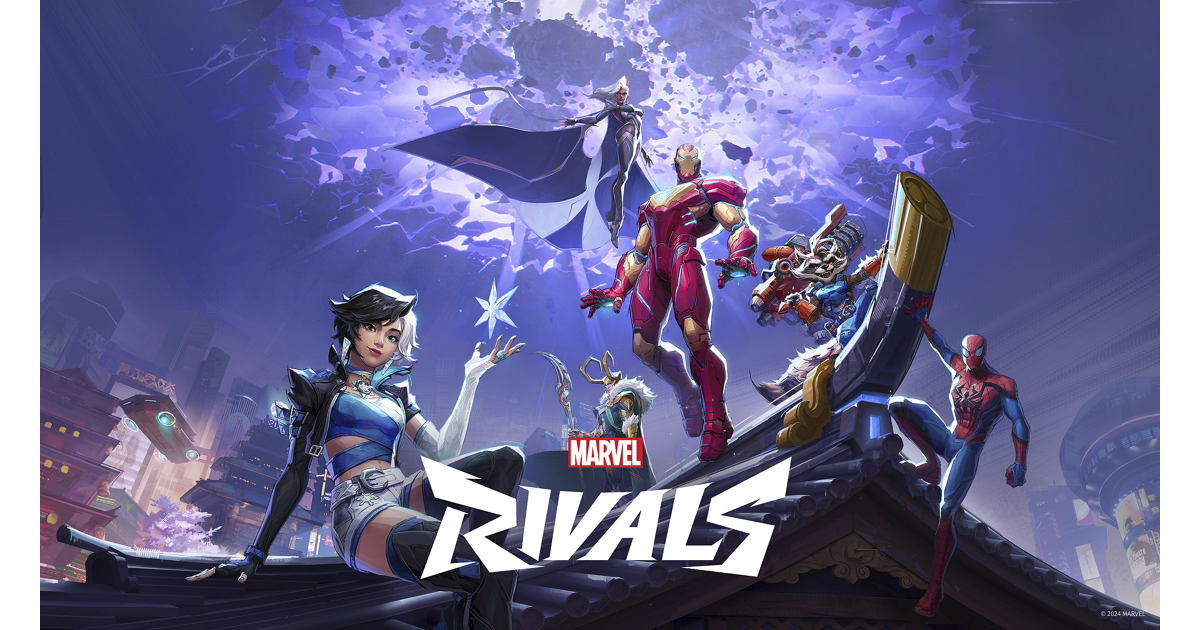Marvel Rivals is gearing up for a pivotal turning point with the highly anticipated Season 2.5 update, and all eyes are on the arrival of one of Marvel’s most feared villains—Ultron. NetEase is preparing to inject new energy into the hero shooter landscape, not just with a new character and map, but with sweeping changes to gameplay, balance, and its future seasonal model.
Latest Marvel Rivals news summary surrounding the mid-season 2.5 release:
Expected Release Date:
Marvel Rivals Season 2.5 is rumored and widely expected to launch around late May 2025, with some sources pointing to May 23rd or May 30th, 2025. This mid-season update follows the pattern of previous seasons, occurring roughly six weeks after the start of Season 2.
New Character:
The most significant addition in Season 2.5 is the confirmed new playable character: Ultron. He is slated to join the roster as a Strategist. Leaked information suggests his abilities will involve deploying drones to support allies with healing and bonus health, while also dealing damage with energy beams. His ultimate is rumored to summon drones that can either damage enemies or heal teammates.
New Map:
A new Convoy map called Arakko is also anticipated to be introduced in the Season 2.5 update.
Balance Changes:
While full patch notes are not yet available, rumors and developer teases suggest that Season 2.5 will include balance adjustments for several existing heroes. Some heroes mentioned as potentially receiving changes include Groot, Captain America, Spider-Man, Doctor Strange, Winter Soldier, Black Widow, Mister Fantastic, Scarlet Witch, Peni Parker, Jeff the Shark, and Rocket Raccoon. These changes aim to address the current meta and community feedback, particularly concerning the power levels of certain heroes and the competitive point system.
Future Season Teases and Roadmap:
Season 2.5 also serves as a transition point for the game’s future content release strategy. Starting with Season 3, NetEase Games is reportedly planning to shorten the duration of seasons from three months to two months. Furthermore, the cadence of new hero releases is expected to increase, with a new character potentially being added every month starting from Season 3.
Leaks and data mining have hinted at several characters that could be coming in future seasons, including Season 3 and beyond. Some of the most anticipated leaked characters include:
- Blade: Expected as a Duelist, potentially arriving in Season 3.
- Professor X: Rumored to be a Strategist, possibly arriving in Season 3.5.
- Jean Grey / Phoenix: Leaked as a Duelist with a potential two-form mechanic.
- Cyclops: Rumored to be a Duelist with abilities focused on optic blasts.
- Deadpool: Expected to be a Duelist with hit-and-run and self-healing capabilities.
Other characters found in leaks include Jubilee, M.O.D.O.K., Nightcrawler, Quicksilver, Rogue, Sprite, Valkyrie, and White Fox, among others.
While Season 2.5 brings new content, it’s worth noting that the game has experienced a significant drop in player count since its initial peak. Many in the community hope that the updates in Season 2.5 and the accelerated content release schedule in future seasons will help revitalize the player base and address some of the issues that have been raised.
It’s important to remember that while Ultron and the Arakko map are largely confirmed for Season 2.5, other details about balance changes and future content are based on leaks and speculation and should be treated as such until officially announced by NetEase Games.
Ultron Joins the Roster: A New Kind of Strategist
Ultron officially enters the Marvel Rivals battlefield as a Strategist-class hero, adding a unique blend of ranged control, utility, and pressure. Long speculated after data-mines and teasers, Ultron’s confirmed kit includes deployable drones capable of dual functionality: healing allies or damaging enemies.
Early reports from test servers suggest his drones can be placed tactically across the map, offering zone control and remote assistance—an unprecedented mechanic among the current Strategist heroes. His ultimate ability, rumored to be “Drone Swarm,” allegedly unleashes a high-tech barrage that blankets an area with aggressive AI units, shifting the tide of battle when used strategically.
Ultron’s introduction is more than a nod to his infamous comic and MCU legacy—it positions him as a high-skill ceiling support hero who could rival the likes of Iron Man and Loki in terms of battlefield manipulation.
New Map: Arakko Brings Mutant Mayhem
Season 2.5 isn’t stopping at character additions. A new map—Arakko—is set to debut, drawing inspiration from the mutant homeworld introduced in recent X-Men comic arcs. This Convoy-style map is expected to feature dynamic objectives, changing terrain, and environmental hazards that reward map mastery. It will mark the first major map addition since Krakoa was added in Season 2, keeping the map rotation fresh and pushing players to adapt to new combat rhythms.
Mid-Season Balance Patch: Big Changes Incoming
With the update, NetEase is rolling out a substantial balance patch based on extensive community feedback. Key highlights from early patch notes and insider sources include:
| Hero | Type | Expected Change |
|---|---|---|
| Groot | Vanguard | Reduced root duration and healing |
| Spider-Man | Duelist | Weaker web cooldowns |
| Doctor Strange | Strategist | Reduced AOE burst and cooldowns |
| Peni Parker | Duelist | Damage buff to ranged shots |
| Scarlet Witch | Strategist | Increased ultimate cost |
| Jeff the Shark | Support | Improved healing uptime |
| Rocket Raccoon | Duelist | Tweaked grenade spread |
| Mister Fantastic | Vanguard | Hitbox adjustments |
| Black Widow | Duelist | Buff to stealth movement speed |
NetEase is also adjusting the ranked matchmaking algorithm and reworking how individual performance is scored, especially for support and utility roles—an area where players have long complained about mismatched rewards and penalties.
The Road to Season 3: Faster Seasons, Faster Heroes
Looking beyond Season 2.5, NetEase is preparing to revamp the seasonal structure. Starting with Season 3, seasons will be shortened to two months, down from the current three. This will coincide with a monthly hero release schedule, a move that signals the company’s desire to keep content fresh and engaging in a genre known for rapid innovation.
While this could lead to meta instability if not managed carefully, it also opens the door for more experimentation, rotating metas, and deeper hero pools in ranked and competitive play.
Data Leaks & the Future Roster
If recent datamines are accurate, the hero roster is only going to get more wild. Upcoming additions potentially include:
- Blade – melee-based Duelist with lifesteal mechanics
- Jean Grey / Phoenix – hybrid Strategist with resurrection or burn damage abilities
- Deadpool – unpredictable Duelist with teleporting and healing factors
- Professor X – area-denial strategist with crowd control powers
- Cyclops – long-range damage specialist with ricocheting beam mechanics
These characters would push Marvel Rivals into deeper narrative territory and offer fresh gameplay mechanics that contrast with the current roster’s style.
Why Season 2.5 Matters
The success of this mid-season update is critical. After a strong launch in late 2024, Marvel Rivals has experienced a modest decline in daily active users, and this patch could be the turning point. With over 40 million total players since launch, retaining engagement through regular content drops, balance tweaks, and community events will determine whether the game can challenge the likes of Overwatch 2 and Valorant in the competitive shooter space.
The arrival of Ultron is not just the addition of a villain—it’s a statement that Marvel Rivals is ready to evolve. As the update drops later in May, players should brace for disruption, strategy, and a darker tone entering the fray. The Age of Ultron, at least in this universe, is about to begin.
Key Takeaways
- Marvel Rivals stands out as a quality hero shooter with varied characters, solid maps, and engaging game modes.
- The developers prioritize overall game balance and character design rather than focusing exclusively on competitive play.
- Regular updates are planned with two new heroes coming soon and a development approach that embraces the vast Marvel universe.
Overview of ‘Marvel Rivals’
Marvel Rivals has quickly become one of the most talked-about hero shooters in the gaming world. The game features a robust roster of beloved Marvel characters, allowing players to create dream teams and develop unique strategies across various maps and modes. Reviews praise Marvel Rivals for being both incredibly fun to play and a loving tribute to the Marvel universe, setting it apart from other corporate offerings in the market.
When it comes to game balance, the development team has made their priorities clear. Rather than focusing solely on competitive play, they’re taking a broader approach to character design and balance updates. This philosophy appears to be working well, as players have responded positively to the varied hero abilities and gameplay mechanics that make each character feel distinct.
The future looks bright for Marvel Rivals, with developers hinting at regular roster expansions. The team has expressed openness to exploring almost every hero from the Marvel universe, with plans to add two new characters in upcoming updates. They also enjoy adding unexpected elements to keep the roster fresh and exciting for players.
Marvel Rivals has emerged as a notable free-to-play hero shooter that offers players a chance to battle with Marvel characters in team-based gameplay. The game has received generally positive reviews for its character roster and gameplay mechanics.
Game Publisher and Developer
Marvel Rivals is developed and published by NetEase Games, a prominent Chinese game developer known for creating successful mobile and PC titles. NetEase partnered with Marvel Entertainment to bring this hero shooter to life, combining their technical expertise with Marvel’s iconic character universe.
The game launched as a free-to-play title, making it accessible to a wide audience without an initial purchase requirement. NetEase has implemented a monetization model typical of modern free-to-play games, focusing on cosmetic items and battle passes rather than pay-to-win mechanics.
NetEase’s approach with Marvel Rivals demonstrates their commitment to creating competitive multiplayer experiences that can appeal to both casual and dedicated players.
Structure and Approach of ‘Marvel Rivals’
Marvel Rivals follows the hero shooter format, where players select from a diverse roster of Marvel heroes and villains, each with unique abilities and playstyles. The game features team-based combat with objectives varying by game mode.
According to reviews, the game offers “solid maps and modes” and provides “frightening levels of choice” for players. The combat system emphasizes team coordination and strategic ability usage rather than just individual skill.
Maps in Marvel Rivals often include interactive elements and environmental hazards that players can use to their advantage. The game balances accessibility for newcomers while providing enough depth for experienced players.
Critics note that while Marvel Rivals shares similarities with Overwatch 2, it has “managed to distinguish itself” with unique gameplay elements that leverage the Marvel universe. The game’s approach focuses on fast-paced action and team synergy.
New Features and Game Mechanics
Marvel Rivals is evolving its gameplay mechanics and character abilities to create a more engaging player experience. The upcoming changes focus on team dynamics and adaptive gameplay elements designed to refresh the competitive landscape.
Gameplay Innovations
Marvel Rivals developers have confirmed significant changes coming to the team-up mechanic in Season 2. This core gameplay element will undergo a substantial shake-up, likely altering how players coordinate their heroes in combat situations.
Unlike traditional hero shooters, Marvel Rivals offers fast-paced gameplay that accommodates various playstyles without becoming overly complex. The game’s accessibility makes it appealing to both casual and competitive players.
New AI-backed features may be introduced to enhance the player experience through adaptive in-game mechanics. These innovations could potentially allow the game to respond dynamically to player actions and strategies.
Character Abilities and Skills
Character abilities in Marvel Rivals are designed to balance competitive play while staying true to each hero’s Marvel universe powers. The development team has focused on creating distinct playstyles that remain accessible without overwhelming new players.
The game allows for various combat approaches without complicated mechanics, making hero abilities intuitive yet strategically deep. Players can expect continued refinement of character skills to maintain competitive balance.
New character skins have been confirmed for upcoming releases, with the latest update revealing two definite additions and three possible new cosmetic options. These skins provide visual variety while maintaining character identity and recognition during fast-paced matches.
Notable Characters and Superheroes
Marvel Rivals features an impressive roster of characters that includes iconic heroes, villains, and some surprising additions from across the Marvel universe. The game balances well-known figures with more niche selections.
Highlighting New Additions
Marvel Rivals has introduced some unexpected characters that haven’t received much mainstream attention. Cloak and Dagger bring their unique light and darkness powers to the game, offering players interesting team synergy options.
Moon Knight, with his multiple personalities and combat styles, provides a complex playstyle that rewards skilled players. His addition shows the developers’ willingness to include characters beyond just the MCU favorites.
Psylocke joins the roster with her psychic abilities and ninja skills, offering both ranged and close-combat options. Her telepathic powers create unique gameplay mechanics that set her apart from other fighters.
The development team has mentioned they enjoy adding “curveballs” to make the roster more diverse, which explains these less mainstream but beloved character choices.
Fan-Favorites and Their Impact
Spider-Man and Hulk remain two of the most popular characters in Marvel Rivals. Spider-Man’s agility and web-slinging abilities make him perfect for the game’s fast-paced combat, while Hulk’s raw strength provides a satisfying power fantasy.
Wolverine brings his healing factor and adamantium claws to the battlefield, making him a formidable close-range fighter. His sustainability in prolonged fights makes him a top pick among competitive players.
Other fan-favorites like Iron Man, Black Panther, and Thor round out the roster with their iconic abilities. The game also features villains like Loki, adding interesting dynamics to team compositions.
According to recent reviews, the character balance is surprisingly good despite the diverse power levels in Marvel lore. Each hero feels authentic to their comic book counterpart while remaining viable in competitive play.
Seasonal Content and Updates
Marvel Rivals has established a robust seasonal content structure with frequent updates planned well in advance. The development team has already completed work on Season 2, set to launch on April 11, 2025, with new team-ups and combat enhancements.
Introduction to Season 1
Season 1 of Marvel Rivals launched with a strong foundation of heroes, maps, and game modes. The developers have been actively fine-tuning the experience through regular patches and updates. Most recently, a major update introduced significant meta changes and added Lizard as a playable character.
Season 1.5 brought an interim patch that addressed various balance issues. The development team has clarified that their top priority for balance updates isn’t competitive play, but rather creating an enjoyable experience for all players.
Team-up abilities, a distinctive feature in Marvel Rivals, will see changes in Season 2. New team-ups will be added while some existing ones will be modified to enhance combat dynamics.
Battle Pass System
The Battle Pass in Marvel Rivals offers players a progression system to earn cosmetics and other in-game rewards. Players can advance through tiers by completing matches and special challenges.
The Battle Pass includes both free and premium tracks. The free track provides basic rewards, while the premium track offers exclusive character skins, emotes, and other customization options.
Each season’s Battle Pass typically runs for approximately three months. This timeframe gives players sufficient opportunity to complete the pass before new content arrives.
The development team has already planned content for the next three seasons, suggesting a stable roadmap for future Battle Passes and rewards. This advance planning helps ensure consistent quality and timely delivery of new content.
Crossover Events and Collaborations
Marvel Rivals developers have expressed interest in expanding beyond the Marvel universe through crossover events and promotions with other media. These collaborations could bring fresh content and attract players from different fandoms.
Fortnite Crossover Insights
A potential collaboration between Marvel Rivals and Fortnite stands out as a natural fit. Both games have already demonstrated success with character crossovers and limited-time events.
Fortnite has previously featured Marvel characters like Spider-Man and Iron Man, suggesting a reciprocal relationship could benefit Marvel Rivals. Players might see Fortnite-inspired skins or gameplay modes that blend both universes together.
The gaming community has shown enthusiasm for such collaborations, though some players worry about overshadowing Marvel’s own rich character roster. Developers will need to balance external crossovers with content that stays true to Marvel’s comic and cinematic universes.
Besides Fortnite, other potential collaboration partners mentioned include My Hero Academia, though the Fortnite partnership appears most promising based on existing relationships.
Diverse Gaming Platforms and Accessibility
Marvel Rivals aims to reach a wide audience through its platform strategy. The game balances performance requirements with accessibility options to welcome both casual and competitive players.
Availability on Steam and Consoles
Marvel Rivals launched initially on Steam, establishing its primary PC player base. The game requires moderate system specifications, making it accessible to a variety of gaming setups while still delivering impressive visuals.
NetEase Games, the publisher, implemented their proprietary NetEase Gaming Security (NGS) system on the PC version. This kernel-level anti-cheat has raised some privacy concerns among players due to its deep system access.
Console releases for PlayStation 5 and Xbox Series X|S followed the PC launch, featuring cross-play capabilities. This multi-platform approach helps maintain healthy player counts across all systems.
The game uses a consistent UI design across platforms, with appropriate control scheme adjustments for each device. Controller support on PC is comprehensive and fully customizable.
Mobile Gaming Considerations
NetEase is exploring a potential mobile adaptation of Marvel Rivals. This version would feature optimized controls and slightly simplified visuals while maintaining the core hero roster.
Mobile development faces challenges in preserving competitive balance between touch controls and other input methods. The team is testing various auto-aim assistance features to level the playing field.
Data synchronization across platforms remains a priority for NetEase, allowing players to maintain progress regardless of where they play. The free-to-play model works particularly well for mobile audiences who often prefer lower entry barriers.
Network optimization for mobile connections has required significant investment to ensure fair competition against players on more stable connections.
Community Engagement and Feedback
Marvel Rivals has developed a strong relationship with its player base through active communication and responsiveness to feedback. The game’s success in community engagement has become a standout feature that distinguishes it from competitors in the hero shooter genre.
Role of the Game Director
The Game Director for Marvel Rivals has taken a hands-on approach to community interaction. They regularly participate in discussion forums and social media platforms to directly address player concerns.
When players expressed frustration with the ranking system, the Game Director led the team to make immediate changes. According to recent news, NetEase released an updated statement explaining they would maintain players’ rankings throughout the season rather than implementing a mid-season reset.
This direct line of communication has fostered trust between developers and players. The Game Director’s willingness to acknowledge issues and implement solutions quickly has been praised by the community as a refreshing approach in the competitive gaming market.
Building a Supportive Player Base
Marvel Rivals has cultivated a supportive community through thoughtful monetization practices and inclusive design. The game has been recognized for having “some of the best monetization practices” in the industry.
However, community feedback hasn’t been entirely positive. Some players have noted that the game “feels like everyone is just doing their own thing” and lacks team orientation. The developers have acknowledged these concerns and are working to encourage more cooperative gameplay.
NetEase has implemented several community-building initiatives:
- Regular online tournaments with community participation
- Featured player highlights on official channels
- Community voting on certain cosmetic items
- Dedicated forums for gameplay feedback and suggestions
These efforts have helped Marvel Rivals establish itself as a game that values player input and community building above all else.
Exploring the Marvel Multiverse
Marvel Rivals draws heavily from the rich tapestry of Marvel’s multiverse concept, creating a game world where different realities collide. This approach allows for unique character interactions and storylines that might not be possible in the main Marvel continuity.
Integration of the Multiverse Concept
The multiverse plays a central role in Marvel Rivals’ narrative structure. Players experience diverse environments from across different Marvel realities, each with unique characteristics and challenges.
Teams can include heroes who might never meet in traditional storylines, like Human Torch partnering with characters from completely different universes. This creative freedom allows developers to explore “what if” scenarios that fans have long speculated about.
Map designs showcase this multiverse concept brilliantly, with stages that blend elements from various Marvel locations. One moment players might be fighting in a New York setting, only to have reality shift to an Asgardian battlefield.
Jeff the Land Shark and Alternative Narratives
Jeff the Land Shark represents one of the more unexpected inclusions in Marvel Rivals, highlighting the game’s willingness to embrace quirky, fan-favorite characters from alternative storylines.
Originally appearing in West Coast Avengers comics as Gwenpool’s pet, Jeff has developed a cult following. His appearance in Marvel Rivals demonstrates the developers’ deep knowledge of Marvel lore beyond just mainstream superheroes.
The game features several such alternative narrative elements, allowing lesser-known storylines to shine alongside popular ones. This approach keeps the gameplay fresh while rewarding long-time Marvel fans with references they’ll appreciate.
Similar characters from Marvel’s more offbeat stories make appearances, creating a truly comprehensive celebration of Marvel’s creative history across all its dimensions.
Competitive Landscape: The Rivals of ‘Marvel Rivals’
Marvel Rivals enters a crowded hero shooter market where it faces established competitors with loyal player bases. The game’s position in this competitive landscape will shape its future success and development direction.
Comparisons with ‘Overwatch’ and ‘Sasser’
Marvel Rivals is frequently compared to Blizzard’s Overwatch, with many players seeing it as a potential competitor to the established hero shooter. According to recent discussions, Marvel Rivals appears to be “quickly gaining a foothold on Overwatch” as some players feel Blizzard’s pace of improvement is too slow.
One key difference is Marvel Rivals’ approach to balance updates. Unlike competitors who prioritize competitive play, NetEase developers have clarified that their top priority for balance isn’t focused solely on high-level competitive matches.
The game’s growing character roster is another distinguishing factor. Data suggests Marvel Rivals could increase its hero count by over 200% in the coming years, potentially reaching 105 heroes. This expansion rate significantly outpaces Overwatch’s character development.
Marvel Rivals also stands out with what players describe as “excellent character designs, great map layouts, and plenty of screen-filling specials” that create exciting matches.
Frequently Asked Questions
Marvel Rivals has generated significant discussion among players and critics. Many common questions focus on gameplay issues, technical performance, and the game’s reception in the gaming community.
What are the critical reception and ratings for Marvel Rivals since its release?
Marvel Rivals has received generally positive reviews from gaming outlets. IGN described it as “a very fun hero shooter” with a varied roster of heroes and solid maps and modes.
Critics have praised the game for being fast-paced and accommodating different play styles without becoming overly complicated. This accessibility has been highlighted as one of the game’s strengths.
Some reviewers have noted that while the game offers engaging gameplay, it could benefit from more team-oriented mechanics. The current gameplay sometimes feels like players are “doing their own thing” rather than working together.
Has Marvel Rivals been updated to address balance issues reported by players?
The development team has released several balance patches since launch to address hero power discrepancies. These updates have targeted heroes that were considered either too powerful or too weak in the meta.
Recent patches have focused on adjusting cooldown times for certain abilities and modifying damage outputs to create a more balanced competitive environment. These changes were implemented based on player feedback and gameplay data.
Player discussions in forums indicate that while balance improvements have been made, some heroes still need adjustment. The developers continue to monitor gameplay patterns to identify areas needing further refinement.
What are the latest developments and updates in Marvel Rivals as discussed on social media platforms?
Social media conversations about Marvel Rivals currently center around the upcoming new hero additions scheduled for next month. Players have been speculating about which Marvel characters might join the roster next.
The Weekly Marvel Rivals Discussion Megathread on Reddit has become a central hub for players to share strategies, report bugs, and discuss potential improvements. Community managers actively participate in these discussions.
Players have been sharing gameplay clips of impressive team combinations and strategies, helping to build a knowledge base for newcomers. These social interactions have strengthened the game’s community.
Can Marvel Rivals be considered a commercial success based on recent sales data and player count metrics?
Marvel Rivals has maintained a steady player base since its release, with peak concurrent players reaching impressive numbers during weekend events. The game has performed particularly well in Asian markets.
Revenue reports suggest the game is meeting financial expectations, though exact figures haven’t been publicly disclosed. Microtransaction sales for character skins and battle passes appear to be strong contributors to overall revenue.
The consistent player engagement metrics indicate positive long-term potential for the game. Daily active user counts have remained stable, which is often considered a good indicator of a multiplayer game’s health.
Are there any known technical concerns affecting gameplay, such as lag or server stability in Marvel Rivals?
Some players have reported experiencing stuttering during gameplay, even when their hardware meets the game’s requirements. The official FAQ addresses this issue and provides troubleshooting steps.
Server stability has generally been good, though there have been occasional reports of disconnections during peak playing hours. These issues seem to be more prevalent in certain geographic regions.
The development team has been working to optimize network performance, with recent patches focusing on reducing latency and improving server response times. Players have noted improvements following these updates.
What measures has the developer taken to ensure the online safety and security of Marvel Rivals players?
Marvel Rivals includes a robust reporting system for inappropriate behavior and cheating. Reports are reviewed by a dedicated moderation team that can issue warnings, temporary bans, or permanent account restrictions.
The game employs an anti-cheat system that is regularly updated to detect and prevent hacking attempts. This has helped maintain competitive integrity in ranked matches.
Privacy protections for younger players include chat filters and parental controls. These features allow for a safer gaming environment while still enabling social interaction within appropriate boundaries.






